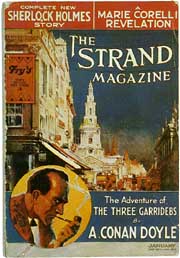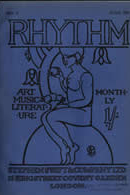The Internet: Savior of the Short Story?
When my daughter was in her first few months of life, I made a sort of peace with the nighttime feedings by reading through a short story collection. One story usually lasted the amount of time she needed to feel satiated, and I had something to look forward to when I first heard those hunger wails—something besides wondering if I’d be able to fall back to sleep before the next round.
A good short story (especially when I’m well rested) can pack such a punch I’ll be dizzy for days. I love ‘em—and not just because they helped me through the days of early parenthood. There’s something about the limits resulting from such a compact form that makes me want to consume them more so than any other kind of writing.
Short stories didn’t start out as the rather “high art” that they are now known to be. In the 19th century, they were more commercially-driven, a way for a writer to make some quick money in a newspaper or magazine. And they used to actually make a writer money. Cosmopolitan once had a contract with Jack London (yes, that Jack London and that Cosmo) for a short story a month at $1000 a story. (Cosmo, believe it or not, was a literary mag before turning into a women’s mag sometime in the 60s.)
National Book Critics Circle board member Eric Miles Williamson believes the shift from commercial to literary short stories came about with the birth of film. “When its narrative function was usurped by film,” he writes, “short story writers focused increasingly on the other aspects of the art of fiction…. the short story has honed itself out of the public eye and entered the depopulate badlands of Art.”
These days, short stories face a tough audience. My reader friends consider them “too literary” or “too short to really get into.” My literary friends write them, yet can’t sell them.
But the internet could be the best thing to happen to short stories. Device reading—like tablets or phones—may be second best. Both have created opportunity and environment for reading and enjoying shorter forms of writing. Never before have you been able to stand in the DMV line and read. There’s also the advent of Kindle Singles, Byliner Originals and Ploughshares Solos. Readers can now buy a single story for a single moment in time.
In that spirit, enjoy the three one-hundred-year-old stories below on one of your “modern devices.” You can sneak off and read when you’re tired of talking to people at holiday parties. And, when you’re done, go buy a few contemporary stories and support the form and its writers.
“The Horror of the Heights,” Sir Arthur Conan Doyle, first published in Strand magazine, November 1913
Of course you know Sir Arthur Conan Doyle—the Sherlock Holmes guy. In addition to being a physician and creating that famous detective, Doyle penned quite a few other short stories and novels. Apparently, he also believed in fairies.
There are no fairies present in “The Horror of the Heights,” though there are chilling hints of other supernatural beings. Maybe don’t read this one while flying.
“Millie,” Katherine Mansfield, first published in The Blue Review, June 1913
“Millie” takes place in a farming community in Mansfield’s native New Zealand. There’s a murder, a lonely woman and a murky ending.
The Blue Review, also known as Rhythm, was a London-based journal. At the time of the story’s publishing, Mansfield was one of its editors. Her lover (and eventual husband) John Middleton Murry was the journal’s official editor. And yes, there’s something juicy there (I imagine it’s not the first in the world of lit journal love stories): Mansfield submitted a story to the journal. Murry rejected it. But he saw something in her work, and apparently, in her, and asked for more.
Murry and Mansfield lasted a bit longer than the journal—it ceased publication in late 1913.
“The Mexican,” Jack London, first published in The Saturday Evening Post in 1911, and in his story collection The Night Born in 1913.
I still haven’t gotten over my crush on London. Or boxing. London was a bit of a boxing buff and keen on social justice issues, and this story is a twining of the two. The entire story hinges on a mysterious boy-man serving in the Mexican Revolution. I found myself mulling over it days after reading.





